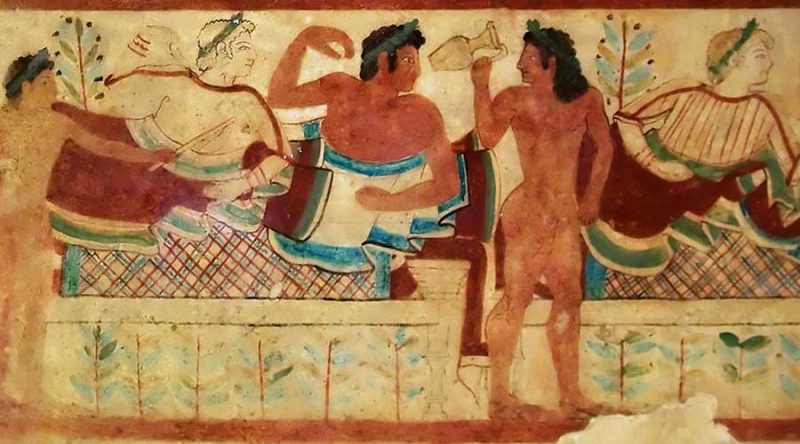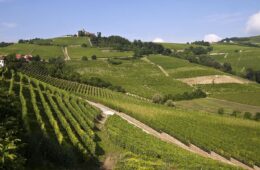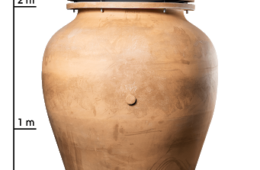WINE, AMONG THE FOUNDING MYTHS OF WESTERN CULTURE

“One day, Dionysus was the guest of Eneo (Oineùs) and fell in love with his wife Altea. When Eneo realized this, he decided to leave the city on a pretext. Dionysus slept with Altea, and their union led to the birth of Deianira; then, in exchange for his generous hospitality, Dionysus gave a vine to Eneo and taught him how to plant it, stipulating that his offering be called Oinos, in honor of the name of his host.” (Igino, Myths, 129).
One of the many myths about the origin of wine (this one being of Thessalic origin) was established well before the arrival of Dionysus himself in the Greek Pantheon. The myth dates back, in fact, to the third millennium BC (the Sumerian period) and is the founding poem of western culture: the Gilgamesh Epic, wherein the figure of Siduri, “the girl who makes wine”, is custodian of the knowledge (of “thought” and “word”, hence lògos), which perhaps allows mortals, by means of a fleeting Montalian “passage”, to achieve a connection with the Beyond.
The “spiritual” drink that Siduri gives to Gilgamesh is by no means “natural”, but absolutely “cultural”, a watershed between the wilderness (vitis labrusca and grapes picked from the vine) and civilization (vitis vinifera and the domesticated vine). Wine, therefore, in ancient mysticism, is a vital element “par excellence”, which, over the centuries, became the Blood of Christ and a formidable metaphor for the three monotheistic religions of the Mediterranean basin. Even the prohibition of its consumption in the Islamic world is an implicit recognition of the ritual power of the nectar of wine.
In fact, the success of a drink that has accompanied homo occidentalis since 7,000 BC could not be explained if its origin were not anchored to the Myth: hence the belief in its magical, esoteric or pharmacological properties: Caesar uses wine to fight an epidemic of plague that threatens his ranks (Plutarch, Vita Caesaris). In the ninth century the Salerno Medical School recommended its use in a “sober diet”: “Inter pastam bibe vinum!”
So much of the vocabulary of our world derives from the Myth: the grape itself (àmpelos) takes its name from the first love of Dionysus, the satyr Ampelo, whence for example, the word ampelography originated.Many names of vines remind us of archaic stories, of the migration of populations, myths lost in the mists of time: Aglianico, Casavecchia, Malvasia, Teroldego, and so on.Despite the contribution of technology, and despite the very modern way of producing it, wine, in some ways, is still a Myth; it is enough to think of champagne and its evocative power.Man will always need the Myth as religio (glue, from “rilegare” (“bind”)), able to “compensate” social inequalities (Barbera and Champagne, G. Gaber), and to create a “cultured” awareness, able to stimulate the action of a community towards a goal: wine, a link between archaic elements and allegorical legends, will accompany us in this pleasantly insinuating way, throughout the coming millennia.
di ANTONIO MAZZITELLI
Articolo tratto da“Il Sommelier”


